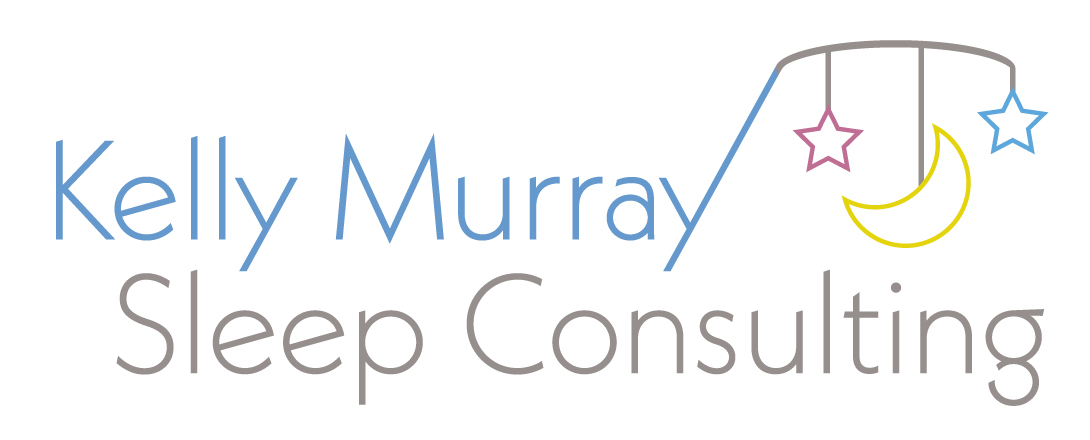If you're in the middle of sleep training and your baby's naps have proven to be more challenging than night sleep, I'm here to tell you
1) You are not alone
&
2) It is completely normal and to be expected
In this blog post, I’ll explain to you why that is, as well as give you some tips to help you guide your baby towards falling asleep faster at naptime and taking those nice, long, juicy naps that we all love and deserve.
Why Naps Are More Challenging During Sleep Training
Allow me to shed some light on why naps are just so darn hard, especially when you compare the process to nighttime sleep. It's because there are two systems that regulate our sleep.
TWO SYSTEMS: CIRCADIAN RHYTHM & SLEEP PRESSURE
The first system, which I'm sure everyone has heard of, is our circadian rhythm. Here’s how it works:
When our eyes are exposed to light during the day, a signal is sent to our brain to suppress melatonin and produce cortisol. The opposite occurs at night when there's an absence of light; a signal is sent to our brain to produce melatonin and suppress cortisol.
The second system is called sleep pressure, or sleep drive, or chemical sleep drive — there are tons of names for it, but it's all the same. It is our desire to sleep.
Our sleep drive is governed by a chemical called adenosine, which our bodies produce while we're awake. The longer we're awake, the more adenosine we have in our system. Adenosine connects to neurons in our brain and inhibits brain function, which makes us sleepy.
The reason why nighttime sleep is easier for your baby is because they not only have lots of sleep pressure (adenosine) built up throughout the day, but they also have the added presence of melatonin. The result? Your baby is extra sleepy at night! Whereas during the day, there's an absence of melatonin in the body because it's light outside (melatonin is only produced in darkness). Because your baby's desire to sleep during the day is dependent on the amount of adenosine in their system, they’re simply not as tired during the day as they are at night. At naptime, they’re less motivated to fall asleep and stay asleep, and this is why there's typically more protesting with naps and why they can be so challenging.
Tip #1: As Always, Be Patient
Naptime challenges and protesting are totally normal and to be expected.
I tell all of my clients that the during first week of sleep training, we need to focus on just teaching your baby to fall asleep independently at naptime.
Expect that it's going to take longer for your child to develop this skill during the day than at night because, like I explained above, they're just not as tired. So give it a good week for your child to learn to fall asleep quickly during the day and then give it a good 2 weeks for them to be able to connect sleep cycles.
Learning to connect sleep cycles during the day is even harder than learning to fall asleep independently at naptime. This is due to the fact that after one sleep cycle, there is less adenosine in the body left to drive the next nap. As a result, our kids are even less motivated to fall back to sleep and it's even more challenging to develop this skill. So patience is key.
Expect naps to be challenging and try to stay as zen as possible about the situation. I know it's easier said than done. No one likes to hear their babies cry — I know I don’t! — but the calmer you can be about it, the better. Our babies feed off our energy, and when we become really stressed out about naps, then we may start to overthink things and make decisions that aren’t actually helpful when it comes to naptime.
The bottom line: set your expectations appropriately, know that it's going to take a good week for your baby to learn to fall asleep, and another 2 weeks for them to start stringing together sleep cycles and take those nice long juicy naps. You. Got. This.
Tip #2: Timing Is Everything
When it comes to nailing naps, it's all about timing. This is because we are relying on sleep pressure to make it happen.
Like I discussed in reviewing sleep pressure, the longer your child is awake, the more adenosine they have in their system and the more sleepy they’re going to be. If you put them down too early, they're not going to be ready to go down and then you're going to see more protesting. Conversely, if you push it a bit and put your baby down too late, then they’ll become overtired. Their bodies start to produce cortisol and adrenaline to fight the fatigue and it becomes even more challenging for them to fall asleep because they’re feeling tired but wired.
So it's all about timing! To help gauge the best timing for your child’s naps, use my time-tested and true wake window guide so you can make sure you're using the right wake windows. Not sure how wake windows work? Take a look at this post: How Wake Windows Work.
Tip #3: Make It Pitch Black
A completely dark environment is key for naps during sleep training. Check your baby's room during the day to get an accurate read on any light leakage. Turn off the lights, close the curtains, or if you have window covers, put those on and make sure there's hardly any light leakage at all (if any) coming into the room. If your baby sees that it's still light out, then your baby's going to be less motivated to fall asleep and instead, they’ll want to stay awake and party!
I recommend my clients cover their windows with material. You can go the DIY route with garbage bags, aluminum foil, construction paper, or you can buy my favorite sleep product, Blackout EZ Window Covers. These window covers are vinyl and customizable; you cut them yourself to the size of your window and adhere them to the window frame with double-sided velcro. The best part is that you can take them on and off throughout the day. Take them off when your child isn’t sleeping to purify air, then put them back up to make it pitch black during naptime. Window covers are the surest way to prevent light leakage, especially coming from the top of the window frame, which we often see with blackout curtains.
Another option for babies is the Slumberpod, which is a canopy that goes over a Pack ‘n Play or travel crib to achieve a pitch black environment. If you go this route, save $20 at checkout using the code KELLYMURRAY10.
Tip #4: Not Drowsy. Awake.
Make sure you’re not putting your baby down drowsy. I know they always say, “Drowsy But Awake!” — and I do like to use that motto for newborns — but I find that if you put your baby down drowsy for a nap after they're 4 months old, then it can cause issues at naptime.
Drowsiness actually starts to become "sleep" at 4 months old. At this age, children’s sleep reorganizes and the first stage of sleep is characterized by that drowsy nodding-off. So if you put your baby in the crib drowsy after they’re 4 months old, you’re actually putting your baby down asleep.
Our little ones’ bodies are very sensitive to any movement when theyre sleeping, so as you put your baby down into their crib drowsy, they will often wake up as soon as their body senses that they're being moved. This triggers the fight-or-flight response, as the body immediately thinks “danger!” and results in a burst of cortisol, which will then makes it harder for your baby to fall asleep.
Drowsiness also makes it challenging for children to connect sleep cycles. After a sleep cycle, children who’ve been put down drowsy will wake up (as we all do in between sleep cycles), and they’re going to be confused — where is my parent who I was just with when I was asleep? They’re going to be looking for you to make them drowsy again and repeat the naptime routine. So, don’t put them down drowsy. Put them down awake.
You Got This Nap Thing!
I hope these tips give you the confidence you need to continue working on naps. Yes, they're challenging but they are not impossible! They just take a little more time and patience. So stick with it! And eventually they'll click into place and be just as easy as nighttime sleep.
If it doesn’t happen for you after a couple weeks, we're always here to help. Book a discovery call with us and we can talk through your situation and suggest a sleep program. Because your family deserves the rest you all need to be your best.
All of our Sleep Squad members have completed Sleep Sense Training and the Kelly Murray Sleep mentorship program. Kelly continues to support, guide and oversee the Sleep Squad as they work with each family. This way, all clients experience the same amazing results (and lots and lots of sleep), regardless of who supports them.
Sweet Dreams
Kelly Murray is a certified sleep coach and an award-winning pediatric sleep consultant based in Chicago offering sleep coaching services nationwide.












